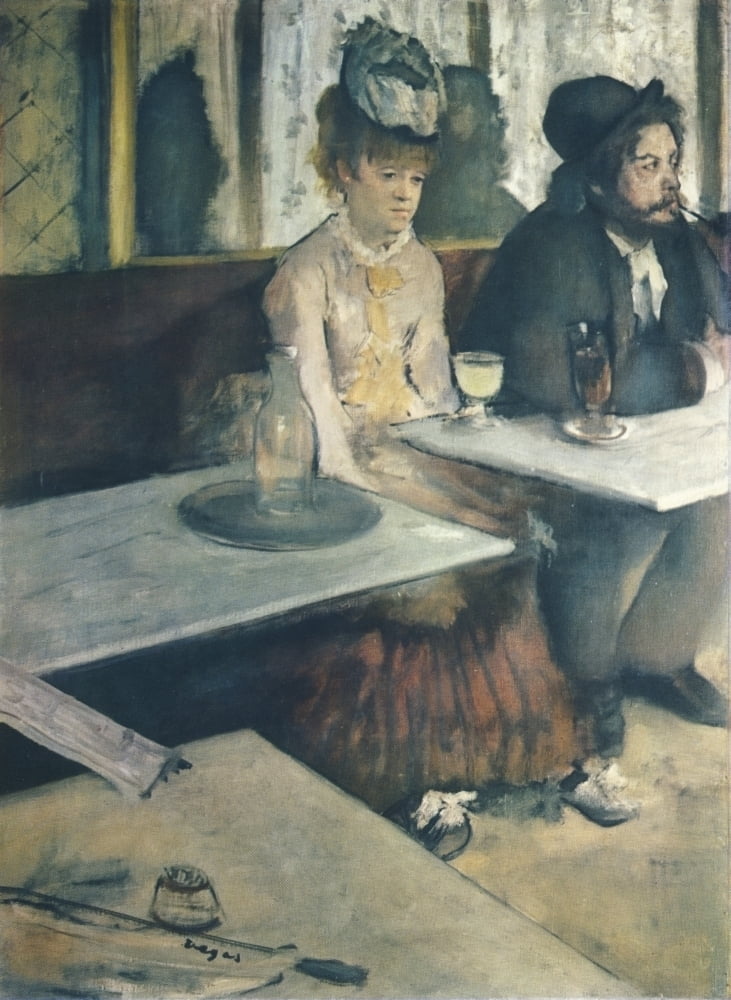

One of the reasons for this is the gendered nature of art history, which meant that few scholars had ventured to explore the portrayals of prostitution and working-class women during this period. Until as late as the 1990s, the theme of prostitution in Impressionist art had been hugely under-acknowledged. Olympia was probably the most controversial painting of the 19th century. She had a maid, is lying in an expensively decorated boudoir, and is being handed flowers sent by one of her clients. Indeed, Olympia - the prostitute featured in Manet's 1865 painting of the same name - was also probably a courtesan. They were a particular favourite of Edouard Manet, who painted courtesans in Masked Ball at the Opera and in Nana. Rather than having the appearance of poverty-stricken streetwalkers, another popular image, the courtesan was well-dressed and elegant. These prostitutes, written into the culture of the 1850s and 1860s, were women who assumed the fashions and behaviours of bourgeois society. Later into the 1800s, there was also the appearance of the courtesan in representations of prostitution. The cultural response to the rise in visible prostitution approached the subject as a symbol for the degraded morals of the city, as well as widespread societal decadence.
#Degas absynth series#
Their customers were largely partnerless male workers who had recently arrived from rural areas and middle and upper class Parisian men.Īs we explain below, Degas produced a series of paintings of milliners.Īt the same time, the female prostitute became a well-known figure in paintings, poems and novels, a feature that endured throughout the 19th century and beyond. MillinersĪs well as registered prostitutes, there was also many forms of clandestine prostitution, largely stemming from woefully underpaid professions like needlework, which included millinery. Indeed, the only options open to a working-class woman at this time - in order to make up the difference between income and living expenses - was through cohabitation with a man or prostitution. By this estimate, women in these circumstances would be at least 200 francs short at the end of the year.įaced with unemployment or underemployment, prostitution became a necessary choice for many women. Taking into consideration the average food costs from this period, women would be left with approximately 40 cents per day for all other living expenses. Milliners earned a salary between 2 and 4 francs per day. In almost every line of work, the salary for women fell below what was needed to cover basic living expenses. One contemporary writer, Maxime De Camp, estimated that Paris had 155,000 prostitutes between 18. What work there was for women, mostly in the garment industry or domestic service, was often terribly underpaid and unstable. Secondly, widespread migration to industrial centres coincided with a low point in demand for women in the labour force.

According to a study of Paris-based registered prostitutes, conducted in 1889, 75 percent were not born in Paris. Number of prostitutes in Parisįrom the 1830s onwards, the number of prostitutes working in Paris increased dramatically as a result of political and demographic changes.įirst, the transformation of Paris into a modern industrial city encouraged the migration of women from the countryside towards the urban centre. It was widespread and conspicuous, quickly becoming a popular subject for art, literature and the newspapers. Prostitution was an integral part of Parisian culture in the 1800s. Pierre-Auguste Renoir was a third impressionist who used prostitution as a theme in his works.

And Edouard Manet used a prostitute as the central figure in the most shocking work of the impressionist era and indeed of the 19th Century: Olympia. In modernised Paris, female sexuality and morality was seen to be less stable and less governable than ever before and the Impressionists fed into these themes and anxieties.Įdgar Degas was the impressionist who used prostitution most in his works, including in his paintings of the Absinthe Drinker, Ballerinas, Milliners and Laundresses. On others, dancers, singers, barmaids, milliners, laundresses and more are transformed into objects of intrigue and ambiguity.

On occasion, they made no secret of the fact that they were painting prostitutes. During the 1870s and early 1880s, there was a dramatic increase in the interest of male artists in women prostitutes in France.įemale sexuality became a common theme in avant-garde art as artists sought to depict and define sexuality, which had been transformed into an economic force in the new, urban Paris of the later 19th century.


 0 kommentar(er)
0 kommentar(er)
